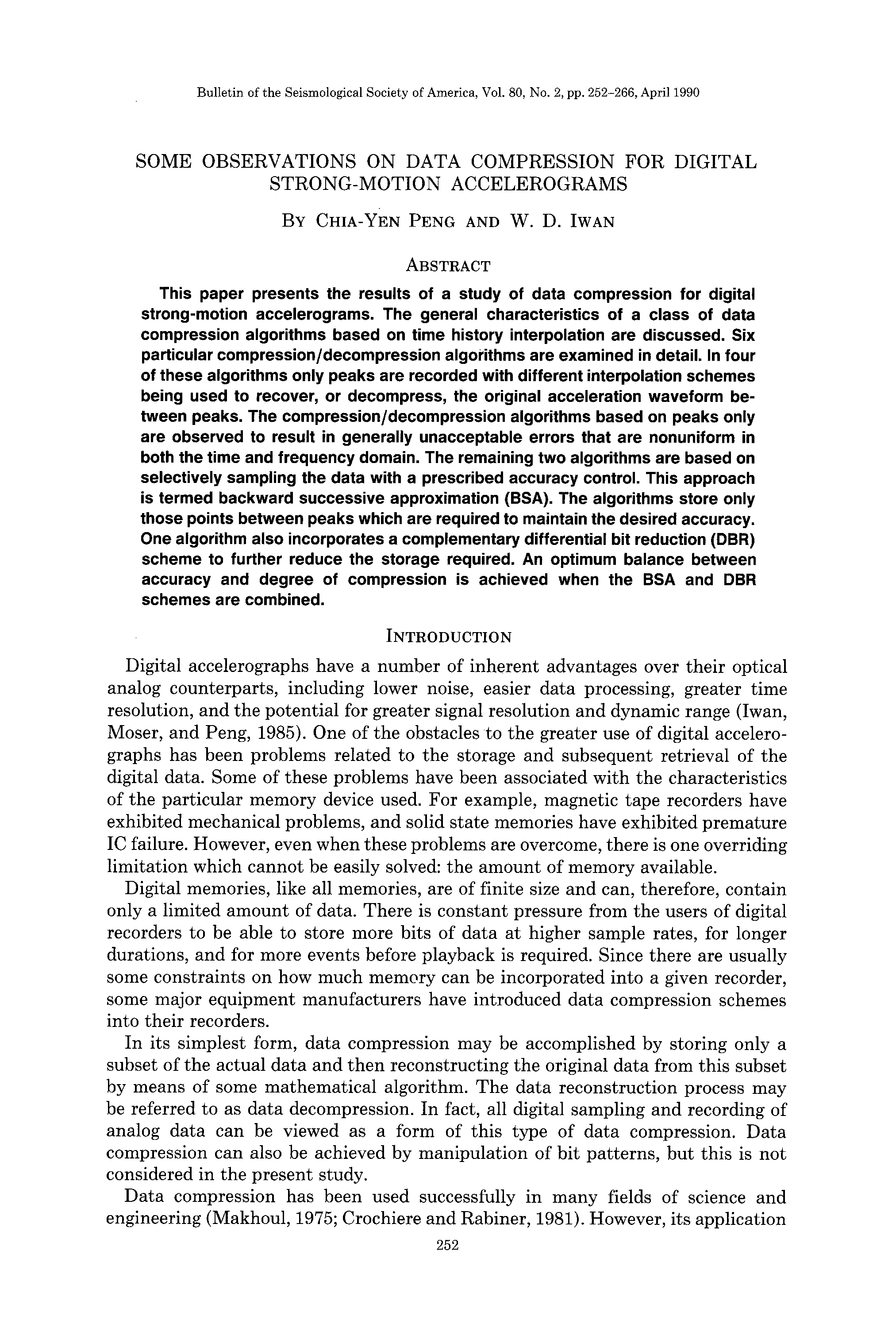Abstract
This paper presents the results of a study of data compression for digital strong-motion accelerograms. The general characteristics of a class of data compression algorithms based on time history interpolation are discussed. Six particular compression/decompression algorithms are examined in detail. In four of these algorithms only peaks are recorded with different interpolation schemes being used to recover, or decompress, the original acceleration waveform between peaks. The compression/decompression algorithms based on peaks only are observed to result in generally unacceptable errors that are nonuniform in both the time and frequency domain. The remaining two algorithms are based on selectively sampling the data with a prescribed accuracy control. This approach is termed backward successive approximation (BSA). The algorithms store only those points between peaks which are required to maintain the desired accuracy. One algorithm also incorporates a complementary differential bit reduction (DBR) scheme to further reduce the storage required. An optimum balance between accuracy and degree of compression is achieved when the BSA and DBR schemes are combined.






